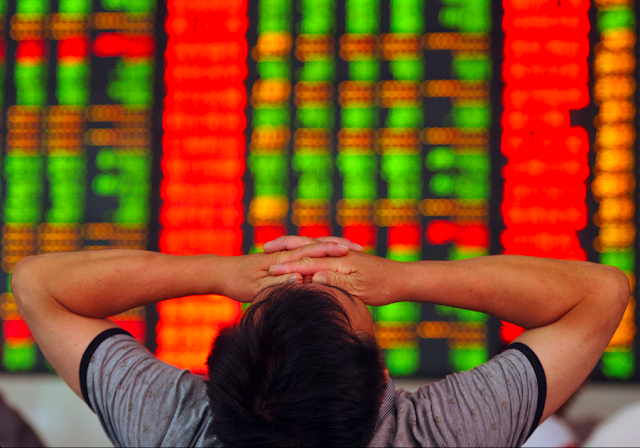 |
| Image: Washington Post |
Up, up, and up, with not a glance below. In just 12 months, the frenzied Chinese stock market gained a staggering $6.5 trillion in value. Many sold their homes, quit their jobs, and took loans in a manic effort to join the invincible bull run. Less than 12 weeks since, trillions of dollars in stock market value has evaporated in a precipitous slide that is spooking investors around the globe.
Following close to half a decade in the doldrums, the Chinese stock market took off spectacularly in the summer of 2014. Shares were being traded higher and higher with unrelenting pace. Nascent companies with paltry profits staged wildly successful equity offerings. One tech company, Beijing Baofeng Technology, saw its shares rise 17-fold in just 26 trading days.
Worryingly, the rally showed no signs of slowing even as the economy progressed sluggishly. With the steep ascent looking excessive, the government should have made an attempt to handle the situation with some careful regulatory measures. These could have included a limit on margin borrowing to curtail the ability to trade on credit. Regrettably, the government instead sensed an opportunity to reduce the debt burden saddling state-owned enterprises by selling inflated equity stakes in the companies. The central government should have put a dampener on the feverish rally; rather, it became the stock market's biggest cheerleader. When the Shanghai Composite hit a new high of 4,000 in April, state-run media proclaimed that it was "only the start of a bull market" and poured scorn on skeptics, asking "what's a bubble?"
With its zealous rhetoric, the Party spawned what some economists call a "rational bubble." Investors were given reason to believe that the government was putting its weight behind the stock market rally and would also prevent a sharp drop. So, although stock prices were far out of whack with underlying fundamentals, investors may have been "rational" in buying shares because they held an ostensibly reasonable belief that another player in the market-that-only-rises would be willing to snap up their asset at an even greater price.
The wild party met its inevitable end around mid-June, as the Shanghai index began its sharp decline from above 5,000 down to 3,700. The ruling party, concerned about its reputation, decided to stage a massive intervention. China's government, and the country's largest stock brokers, launched a stock rescue fund with a nearly $500 billion war chest and a mandate to buy shares until the market hit 4,500. The aim was not only to prop up the market by investing directly into it, but also to reassure stupefied investors that the government had their backs covered.
 |
| Chart: aastock.com
The Shanghai Composite index
|
Although well-intentioned, the government's move was ultimately misguided and very risky. Some may point to the Hong Kong government's intervention in 1998 as a demonstration that the government can step into markets successfully. However, the two situations are not quite analogous. In 1998, Hong Kong's market and its currency were under a speculative attack by hedge funds betting that the city's economy would be the next to fall in the Asian financial crisis. Two senior government officials, Donald Tsang and Anthony Yam, had other ideas. On August 14, they put into action a bold plan to buy up 11 percent of the Hang Seng index in ten days. The hedge funds were caught unawares and were forced to unwind their bets against the Hong Kong stock market.
Crucially, when the Hong Kong government intervened, share prices had been pummelled to prices far below their fundamental value. On the other hand, China's stock rescue fund moved into the market at a time when listed companies were still trading far in excess of their intrinsic values. The fund had not moved in to fend off a speculative attack. The market was just experiencing a necessary correction further exacerbated by hapless investors who had to offload their plunging equity positions to meet margin requirements.
Supporting overvalued shares is an initiative that cannot have a happy ending. Should the measure achieve its objective of boosting share prices, the consequences are dire. Affirming investors' belief that the government will put a bottom on the market will inflate the bubble by making stocks a risk free bet. If the government's actions fail, as they so far have, an equally dangerous view will be engendered: that the Party has lost control.
The Communist—capitalist?—Party has in recent years taken laudable steps toward a more open and free market in China. However, when it comes to the party's handling of financial markets, much is left to be desired. To further the transition to a liberalised economy, the government must scale back its efforts to intervene and direct the market according to its will. If nothing else, perhaps the lesson learned is that the market is a beast not easily tamed.
Good job Yash.
ReplyDeleteThanks, Doug!
Delete